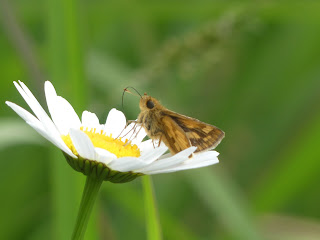A Bale of Turtles
Basking turtles - turtles who like to bask in the sun - are frequently found together, sometimes in pretty close quarters crowded on a log or a rock. Wikipedia suggests that a group of turtles is called a bale.
This picture represents the Basking Big Three turtle groups [1] around here:
- Sliders - The top turtle is a Red-eared Slider, a species introduced to this region from other parts of the country. There are concerns that they might out-compete our truly native turtles, though right now we have plenty of other turtles. Pond Slider is the common name for the species, and around here the Red-eared Slider is the most commonly spotted subspecies.
- Painteds - The 2 turtles in the middle are Painted Turtles, probably Eastern Painted Turtles, our most common Painted Turtle. They have smooth (sometimes shiny) carapaces segmented into easily distinguishable scutes. Painted Turtle is the species name, while Eastern Painted Turtle refers to a particular subspecies.
- Cooters - The large turtle at the bottom is a cooter, though which 1 isn't something I'm sure about. I suspect it's a River Cooter just because the Northern Red-Bellied Cooter usually shows at least a hint of red/orange on its plastron. These are considered the largest basking turtles in New Jersey, though the female Spiny Softshell Turtles can give them a run for their money. River Cooters and Northern Red-bellied Cooters are separate species.
Although we don't think turtles form friendships, it's recently come to our attention that snakes seem to form some relationships with other snakes. I guess it wouldn't surprise me if some turtles preferentially associate with some other turtles too. They frequently bask in close proximity to 1 another; perhaps they get comfortable with 1 another too.
 |
| March 6, 2023 at the Raritan Water Power Canal Photo 267702469, (c) jpviolette, some rights reserved (CC BY-NC) |
[1] They are the Basking Big Three based on observability. Other turtles are going to be harder to spot either because they're fewer in number, or only occasional baskers, or are so shy they disappear underwater at the 1st hint of a photographer (or other "threats").



Comments
Post a Comment